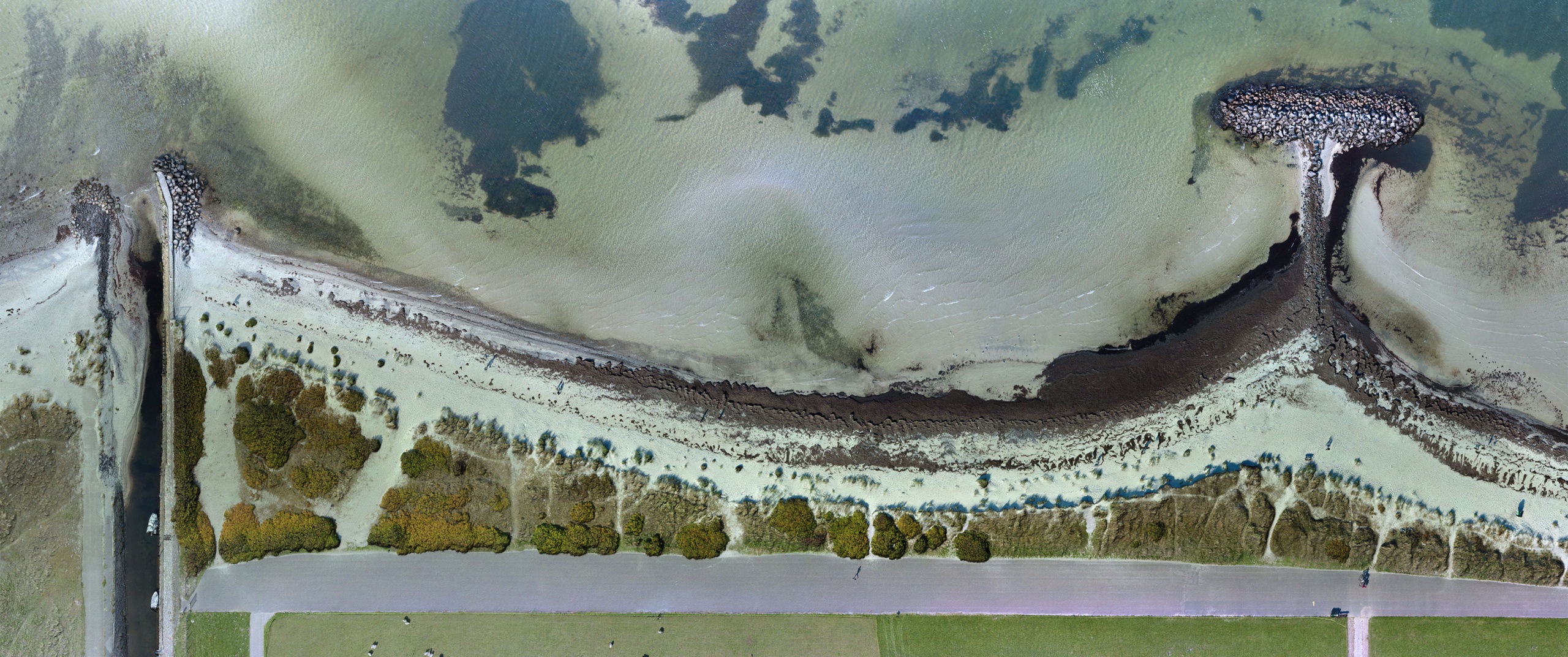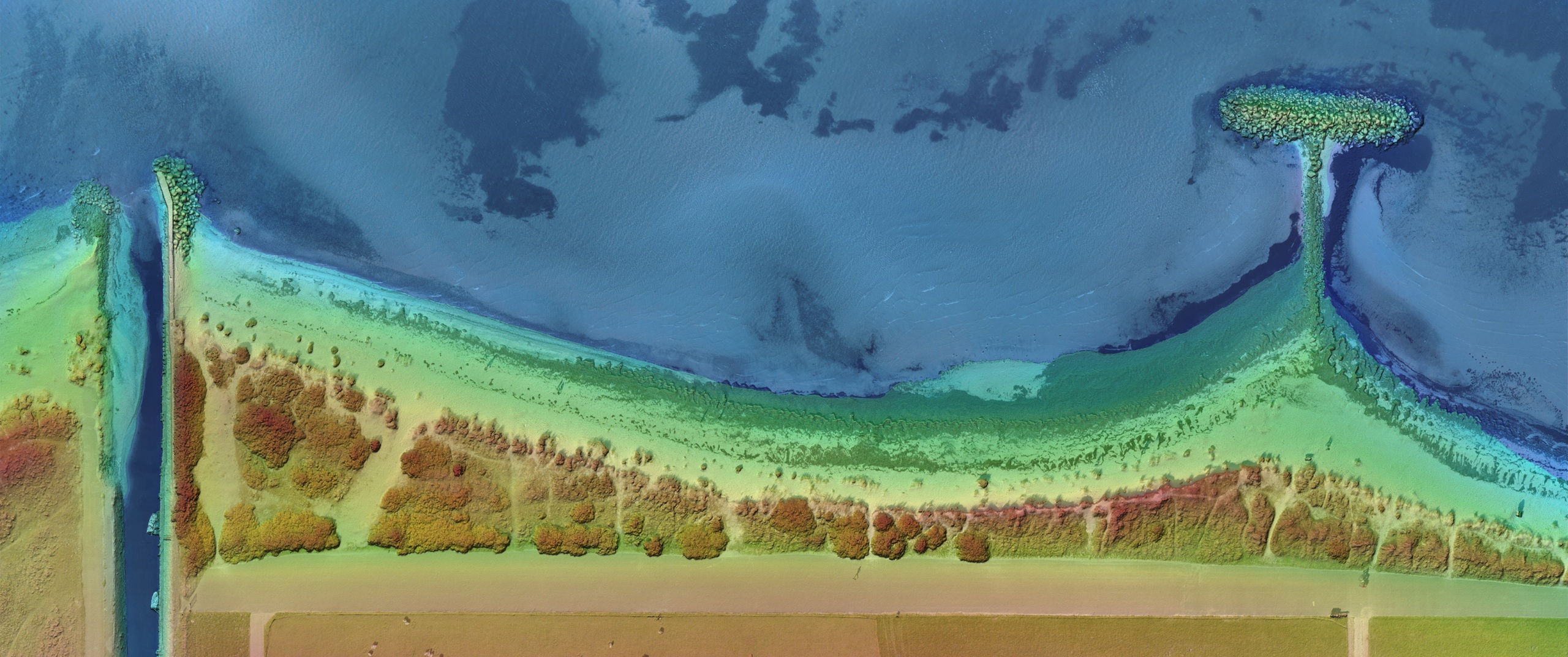Journal / Methods & Concepts
DAM FINE DATA: Sub-Millimeter-Resolution UAS Dam Surveys

Not an easy hike - alpine dams can pose significant hazards for winter-time surveying
In early 2021, we crowded ourselves and our equipment into a tiny Swiss gondola, making our way to one of two dams scheduled for water-side inspection – no easy feat, given the meters of snow closing off many alpine roads during winter. Often situated in difficult-to-reach locations, Swiss pumped-storage plants can greatly benefit from sub-millimeter-resolution UAS dam surveys. With the appropriate survey-grade, metric sensors, current uncrewed aerial systems (UAS) can offer safer access and increased cost-effectiveness over more traditional inspection methods, while also providing comparable or better data.
Much More Than Chocolate, Knives, and Time Pieces: Swiss Hydropower
Well over half the energy produced in Switzerland comes from hydropower, a growing industry, with Axpo Holding AG as Switzerland’s largest hydropower producer. The canton of Graubünden, where this project took place, contributes over twenty percent of the electricity generated from hydropower in the country, totaling more than 7.9 billion kilowatt hours per year.
The majority of hydropower in Switzerland comes from storage power plants and run-of-river plants, with only 4.3 percent of Swiss hydropower provided by pumped-storage hydropower plants. However, pumped-storage plants are an important piece of a hydropower system, helping to balance supply and demand. In a pumped-storage system, reservoir water is sent through pressure pipes in order to drive turbines, which generate electricity to be fed into the power grid. In addition to providing energy during peak usage, pumped storage plants also allow for the conversion of excess electricity from the grid through the transfer of water from the lower reservoir to the higher reservoir during off-peak periods, making them a vital resource for smoothing energy consumption. Traditionally, water-side inspections of the respective dams tend to cause significant turbine downtime.

low water levels cause turbine downtime - which can be significantly reduced by uncrewed surveys
Swiss Dam Safety: An Internationally Recognized Regulatory System
Throughout the lifetime of a dam, appropriate operation and consistent maintenance are paramount to minimizing risk. Regular inspection helps to ensure the safety and function of a dam, an area in which Switzerland – highly praised by the International Commission on Large Dams – has excelled, having had no dam failures since 1887. However, conventional dam inspections require resource-intensive data collection by means of workers atop platforms suspended from the dam, providing a prime use case for UAS dam surveys to improve inspection safety and efficiency.
Unlike popular consumer-grade drones, our equipment includes made-to-measure UAS and metric cameras, made specifically for surveying and inspection. The iXM100 from Phase One is our favorite tool for photogrammetric data acquisition, allowing us to get the sub-millimeter resolution data required for a detailed analysis of the safety of a dam. When compared to cameras like the DJI Zenmuse P1, the iXM100 has not only superior image quality, but also has a faster trigger: within the typical two-second trigger interval for a single shot of the DJI P1, our iXM captures six images – requiring less flight time to capture the necessary data.
With our current setup, we can achieve a 1.5 mm ground sampling distance (GSD), with a footprint larger than 17 x 13 m, hovering at about 32 m or 60 m away from the dam face (depending on the lens). A 1 mm GSD (footprint roughly 12 x 9 m) is possible at a distance of up to ~40 m away, whereas a 0.5 mm GSD (footprint ≆ 6 x 4.5 m) can be attained up to ~20 m away from the dam wall.
Complete Control for Sharper Images
While utilizing a cutting-edge industrial camera considerably enhances productivity, added automation eases the job. No matter which of our UAS we choose, all of them are equipped with real-time kinematic GNSS, LiDAR-based rangefinders and complete camera setting control, simplifying not only post-processing, but also allowing for sharper images with spot-on focus.
This is particularly important due to the convex shape of most dams, posing challenges for pilots and their spotters, especially during water-side UAS dam surveys in gusty winds. Of the two dams we surveyed, one was 127 m in height with a crest length of 480 m, while the other had a height of 117 m with a crest length of 560 m. Such areas also require terabytes of data storage for the desired (sub-)millimeter resolution of the images, making them a prime use case for our onboard processing units with significantly larger data storage.

A: survey site | B: single image (cropped height) | C: image at 100% Zoom | D: point cloud & Analysis | GSD: 0.5 mm/pix
Deliverables – It’s All About Perspective.
With the gathered images and derived multidimensional deliverables, dam managers can assess the dam face for abnormalities or degradation. Quality data is essential for a thorough assessment of structural integrity. Even miniscule cracks can be detected by sub-millimeter-resolution UAS dam surveys, enabling inspectors to identify areas of concern, which are then properly addressed to mitigate risks before they could progress into more potentially costly and dangerous issues.
Stay tuned for the unveiling of our new, fully offshore capable, gas-hybrid multi-rotor UAS, which can combine two iXM100 cameras and a survey-grade Riegl LiDAR, while keeping the entire payload completely stable. Stability is paramount for flying in offshore conditions (or in this case, windy alpine valleys). High wind tolerance means scrubbed missions due to high winds are a thing of the past. The upcoming system will also be able to carry a single, large focal length lens, enabling inspections with half-millimeter resolution from a distance of 40 meters; allowing for a new level of risk management while gathering the best possible data from afar.
Orthodrone is your reliable partner for drone-based critical infrastructure inspections – including sub-millimeter UAS dam surveys in hard-to-reach areas. With hours of hover time and top-of-the-line sensors, we are looking forward to revolutionizing the way all of us gather, process, and utilize spatial data. For a closer look at a one of these dams, follow the link below to a (slightly decimated) point cloud!
Sample Data: Water-Side Dam Survey (Desktop Version)


